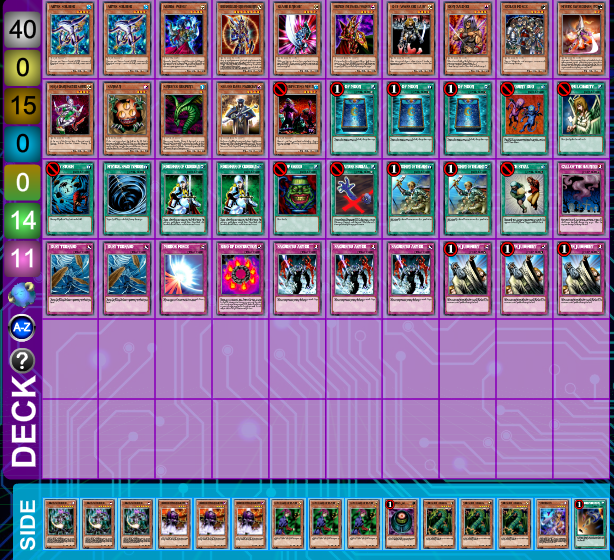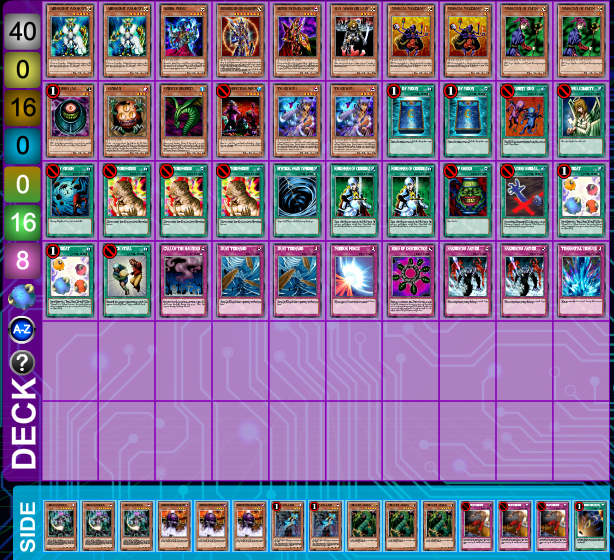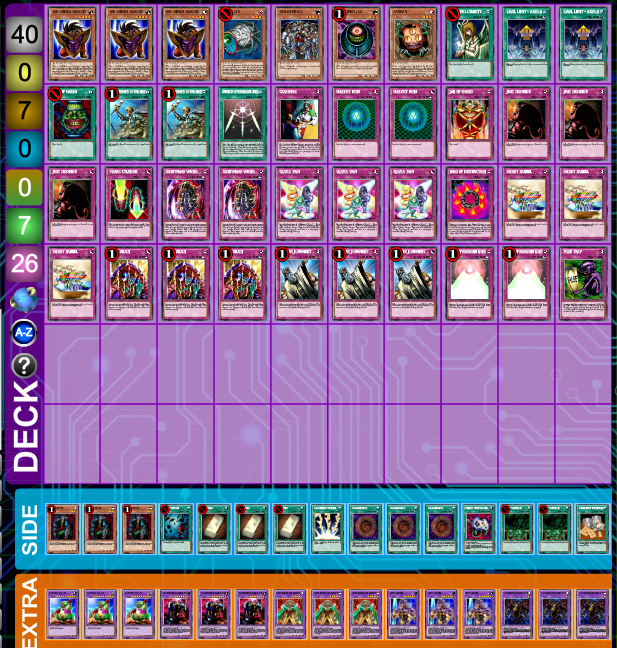|
In Yu-Gi-Oh!, the sidedeck is traditionally used as a toolbox to help win specific matchups. Usually when you sidedeck, you will side in 2-6 cards and side out cards that do not work well for the matchup while not affecting your core strategy.
On the other hand, with transition sidedecking, you side in all fifteen cards from your sidedeck for fifteen core strategy cards from your main deck. This is fundamentally different from traditional sidedecking tactics, and it has its own risks and benefits. Why Use a Transition Sidedeck?
One of the reasons why transition side decking can work in Goat Format is that many deck and strategies already play many of the same core cards. For example: Pot of Greed, Graceful Charity, Delinquent Duo, Mystical Space Typhoon, Heavy Storm, Snatch Steal, Premature Burial, Book of Moon, Sangan, Sinister Serpent, Breaker the Magical Warrior, Ring of Destruction, Mirror Force, Torrential Tribute, Call of the Haunted, Sakuretsu Armor, Trap Dustshoot, and Solemn Judgement.
The biggest advantage to a transition sidedeck strategy is the surprise factor. Changing your strategy to win the game in the middle of the match can give you the upper hand since your opponent is likely using the traditionally method of side decking: taking out cards that are useless in the matchup and sidedecking in cards specifically aimed against your deck. For example, if your main deck has no defensive monsters, many opponents will side out their copies of Nobleman of Cross Out since they are two dead cards. This is where you will have the opportunity to sidedeck in powerful flip effect monsters like Morphing Jar or Magician of Faith without the fear of repercussion. Another easy example of a good transition sidedeck strategy would be a Burn deck that transitions into a Cyber-Stein OTK deck (or vice-versa). Cards like Mirror Force and Scapegoat can be virtually useless versus a traditional Burn deck, so many players will opt to side out those cards, leaving them vulnerable to big attack swings. Historically speaking, this strategy was popular during late 2006, when Cyber-Stein OTK with a Burn transition sidedeck took 1st place SJC San Jose. Transition Sidedeck Risks
A transition sidedeck is not well-rounded. Using a transition sidedeck can you leave you vulnerable to alternate win condition decks like Burn or Empty Jar if neither your main or sidedeck has adequate coverage. You will have no specific answers in your side deck for these threats. Because of the threat from alternate win conditions, this strategy can really fall apart if you make an incorrect meta call. Playing versatile cards like Solemn Judgement, Trap Dustshoot, Raigeki Break, and Dust Tornado can be helpful with combating these decks that you would normally side against.
Example Transition Sidedeck IdeasYou might also like...
For other possible sidedeck strategies, check out Goat Control vs Anti-Meta Warriors Sidedeck Strategy and Sidedecking Against Alt-Win, Burn, Combo in Goat Format.
0 Comments
Leave a Reply. |

Categories
Upcoming Live Events (Goat Grand Prix) Tournament Coverage/Deck Lists Goat Grand Prix Application Hall of Fame Play Online Strategy: Advanced Strategy: Beginner Tier List Archives
July 2024
|
Copyright © 2015












 RSS Feed
RSS Feed